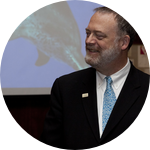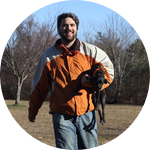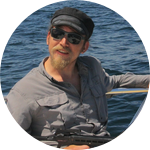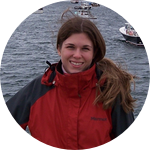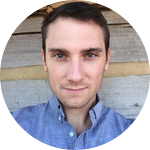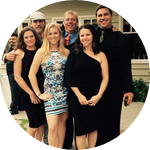Project Results
I am excited to share our findings. We measured 23 metals and Se in skin of 7 whale species from the Sea of Cortez. Metal levels appear to be decreasing in these whales over time, except aluminum, chromium, iron and nickel, which are remaining the same or increasing. Aluminum, Chromium and Nickel are known to be toxic to mammals and may pose a threat to the health of whale populations in the Sea of Cortez.
A Whale of a Tale: A One Environmental Health Approach to Study Metal Pollution in the Sea of Cortez.
John Pierce Wise Jr., Tayler J. Croom-Perez, Idoia Meaza Isusi, AbouEl-Makarim Aboueissa, Carlos A. López Montalvo, Mark Martin Bras, Rachel M. Speer, Andrea Bonilla-Garzón, Jorge Urbán R., Christopher Perkins, and John Pierce Wise Sr.
About This Project
Metal pollution in the ocean is a worldwide concern. We study the impact of metals, such as mercury, chromium and lead, on whales. Metals can accumulate in whale tissues, but its poorly understood how these metal levels change over time. In 2000, we analyzed metal levels in whales from the Sea of Cortez. Now, 16 years later we plan to return to the Sea of Cortez to measure how whale metal levels have changed. These data will help in the conservation and protection of these important animals.
Ask the Scientists
Join The DiscussionWhat is the context of this research?
Ocean pollution has emerged as a pressing global concern. While plastics and organic chemicals have captured much attention, the threat of metal pollution is often overlooked in the marine environment. We use whales as an indicator species to show the global nature of metal pollution and have documented metal levels in several regions in a series of scientific publications. Whales in some regions including Kiribati, a remote island in the Pacific, have alarmingly high metal levels. One region we have documented is whales in the Sea of Cortez in the year 2000. We want to return to the Sea of Cortez 16 years later to determine if levels in this important sea are increasing. It will be one of the first studies to evaluate the effect of time on pollutant levels in whales.
What is the significance of this project?
Ocean pollution poses a significant threat to the health and well-being of marine life and ultimately to people. While the concept that oceans are polluted may seem obvious, how the pollution affects the marine life is understudied and very poorly understood. We seek to know how much pollution is there and how pollutant levels are changing over time. To start we can use whales to help understand the problem. Furthermore, because they are our closest relatives in the sea what happens to them will likely happen to us. This Sea of Cortez project is a unique opportunity to study pollutant levels 16 years after the initial sampling to help us understand how pollutant levels change over time. The data will also help document the threat of pollution to whales, a key aspect to their conservation.
What are the goals of the project?
The plan is to go to the Sea of Cortez in the Gulf of California during the month of April 2016. We will collect whale biopsies and analyze them in the laboratory for 20 metals and communicate the results to the scientific community and general public. The samples will be analyzed over the Summer and the results communicated in the Fall.
To collect the biopsies we will be using a crossbow with a specialized arrow to take small biopsy samples (imagine a sample the size of a disposable Bic pen cap). The whales rarely react to the arrow and we estimate it is less of an impact for them than a mosquito bite is for a human. We collect the sample and use it to determine metal levels and the gender of the whale.
We will compare our 2016 data set with our data set from 2000 and report results.
Budget
The project has five major cost components: 1) Personnel travel to and from site; 2) Ship time to collect the samples; 3) Sample analysis costs; 4) Personnel costs and 5) Project management costs. We have funds provided to Dr. Wise from the University of Louisville to cover our travel to and from the site. Our personnel costs are either being covered by our individual employers or are being volunteered. The budget is essential to help cover our ship time, analysis and projetc management costs.
Endorsed by
Meet the Team
Affiliates
Affiliates
Affiliates
Affiliates
Affiliates
Affiliates
Team Bio
We are a team of scientists who excel in the field and the laboratory. Each member has experience with wildlife especially whales, sea turtles and alligators. We have worked together for over 7 years tackling difficult and important questions in the health of our environment. Each member brings their individual experience and strengths that allow use to collect the samples, analyze them and effectively communicate the results to both the scientific community and the public.
John Wise
My passion for science and wildlife began when I was a young child fascinated by the world around us. I have studied and trained and shaped my career around that passion, focusing it on understanding the impact of the environment on the health of people, animals and the ecosystem. For me, whether it is our work in the tiny, microscopic world of a cell or our work out in the wild with some of the most amazing creatures on earth, being a scientist is always a thrill and a privilege. To be a scientist is one part explorer. You venture into unknown aspects of the world and discover things no one has realized or seen before. It is one part detective. You don your Sherlock Holmes hat, open your mind, and gather evidence to solve mysteries and explain puzzles that underlie your new discoveries. It is one part artist. You experience even more deeply the beauty and wonder of the world and you present your discoveries in images, words and ideas. It is one part dreamer. You step back in amazement and wonder and imagine what you might find next. But to me, the most important part, the most exciting part, is to be able share all of these aspects with others and to be an educator. We all thirst to know more, to understand more. We seek to be amazed and inspired by the world. Thus, for me, engaging others in my scientific quests, teaching them and learning from them, is a central part of being a scientist. I hope you will join me on this next quest.
James Wise
For all my life I have had a passion for science and the environment. As I have grown personally and professionally, my interests are focused on environmental health issues and how the health of the environment is important for the health of both humans and animals. Specifically, I am interested in understanding how chemicals cause cancer, impact wildlife and finding better solutions to these problems. I find the problem solving aspects of these fields intriguing and the chance to help out society and environment as a whole very fulfilling. My goals are to future my skills and experiences in sciences and continue to study these problems and share my knowledge and experiences with others in the community. I have extensive training in field studies involving environmental health and studying whales.
Johnny Wise
Dr. Johnny Wise earned his Ph.D. from Purdue University in neurotoxicology. Currently he is an Assistant Professor in the Department of Pediatrics at the University of Louisville, with a research focus on the interaction of toxicology and aging. Dr. Wise uses what we colloquially refer to as a "toxic aging coin": heads we consider how age impacts the neurotoxic outcome of metals, tails we consider how metals acts as gerontogens and contributes to biological aging of the brain. He has studied whales and metals toxicology since 2010 and has voyaged in the Gulf of Maine, Gulf of Mexico, Sea of Cortez, and around the Channel Islands near Santa Barbara, CA, most often serving as the primary biopsier to collect samples from the whales. While at sea you can most often find him in the crow's nest searching for whales, or on the bowsprit of the boat ready to biopsy. He is often singing and dancing while at sea, using his talents to draw the whales in closer.
Jamie Young
When you walk out your front door, what do you see? A busy street, bustling with morning commuters? A stand of tall oaks, with large green leaves glistening in the sun?
I see science. I see mysteries that are ready to be solved. This is how I have always seen the world. This perspective has been my North Star, guiding me in my pursuit of a career in environmental toxicology. I am interested in studying the impact of environmental contaminants on human, animal and ecosystem health as they are intimately linked. My hope is that by educating the public and sharing results from studies, such as the ones in the Gulf of Maine, we can better understand the complexities of our ecosystems.
Mark Patrick Martin
I had the luxury of growing up around sharks and bioluminescence.
I truly believe one has to spend time around nature and its creatures to even begin to understand them. This combined with good science is the key to beginning to apply the science to make real changes without losing sight of nature's way and how it's changing.
Having the fantastic opportunity to grow up in a Caribbean island I learned a great amount from interacting with the sea. From a young age I learned about ships, marine biodiversity and the sea. I then had the chance to develop professionally as the chief field researcher for the Vieques Conservation & Historical Trust working on collaborations with the Wise Toxicology Labs, Woods Hole Oceanographic Institute, Scripps Institute of Oceanography and a Variety of international university and federal agencies, including the White House Sustainability Task Force for Vieques. I'm currently in my last year of specializations degrees in Oceanography and Marine Resource Management. For the last twelve years I have been working on research of the Bioluminescent bay systems, Light pollution control and monitoring, environmental education, advocacy and policy for sustainability and conservation strategies. We work on everything from sharks to lionfish and mangroves and we strive to transfer the data to the general public in a fun and digestible way.
I am a licensed volunteer for the USGS and founded the Marine Life exhibit at the VCHT, an interactive aquarium known as "the smallest aquarium in the world". I was one of the creators of the award winning MANTA educational program, a citizen science, field activity based conservation educational system see vcht.org
Our excursion on the Sea of Cortes is crucial to continue to ride the wave of the scientific and social revolution that is happening, as we see what we are doing to the world and realizing we have a chance to do something about it.
Laura C. Savery, Ph.D.
My passion for science and the environment began as a middle school student winning third prize at the regional science fair with a botany-related project. My love of botany further budded during my undergraduate years where I investigated if sunflowers were able to hyperaccumulate metals from the soil. During this time, I began to wonder how we were impacting our environment and to what extent. To answer this question for myself, I began a winding course of an education through the field of biology beginning first at a medical school as an intern performing breast cancer research; then as a doctoral student discovering how metals affect the human body at the cellular and DNA level and why they may cause disease; and finally working on a project looking at the concentrations of metals and flame retardants in whales from all over the globe including some from the most remote locations. Everywhere I looked whether in a petri dish, microscope, 20 feet up on a platform of a sailboat, or in an office analyzing big data sets, I could see evidence of how humans were affecting their environment, which consequently affects all the organisms that depend on it including endangered species and ourselves. I am passionate about contributing to the conservation, protection, and management of our oceans whether in my backyard or across the globe, the marine life residing within it and the humans that depend on it and also educating other scientists, law-makers, businesses, the public and even my own children to how they may help too!
Ben Scheelk
Ben manages The Ocean Foundation’s Blue Resilience Initiative, Fiscal Sponsorship Program, and other internal programs related to protected areas, high seas governance, and sustainable tourism. Ben’s work involves general operations, financial management, new business development, contractor management, stakeholder engagement, program evaluation, and client marketing. Ben joined TOF after working as the project manager and executive assistant for Alexandra Cousteau at Blue Legacy International, one of TOF’s now fledged projects. Ben holds a Masters of Public Administration (MPA) and a Certificate in Nonprofit Management from The George Washington University. He graduated from Northern Michigan University with a B.A. in Earth Science and International Studies with Honors.
Ben serves as Chairman on the Board of Directors for The Commons, a 501(c)(3) that empowers restoration stakeholders with access to high quality digital services and open tool kits. He also serves as Treasurer on the Advisory Board for Ocean Connectors, a fiscally sponsored project of The Ocean Foundation, which uses classroom activities, field trips, and “knowledge exchanges” to connect youth and build global stewardship in San Diego and Mexico.
Project Backers
- 248Backers
- 154%Funded
- $7,708Total Donations
- $23.02Average Donation
